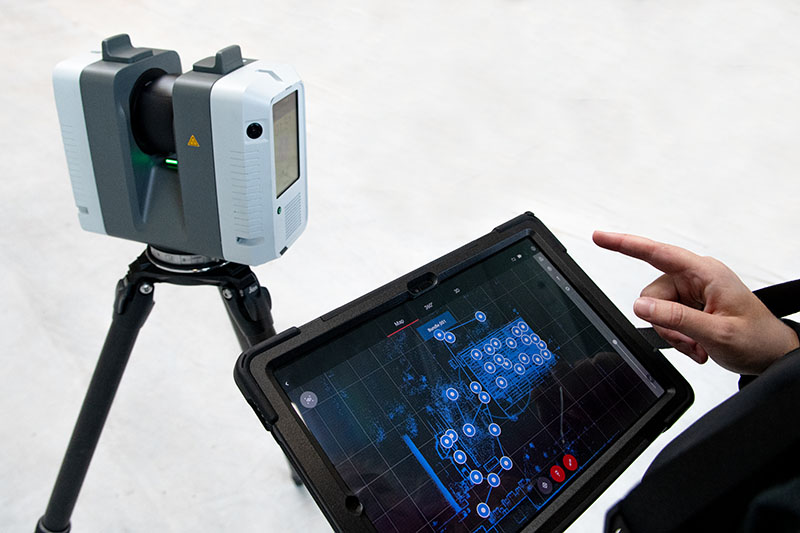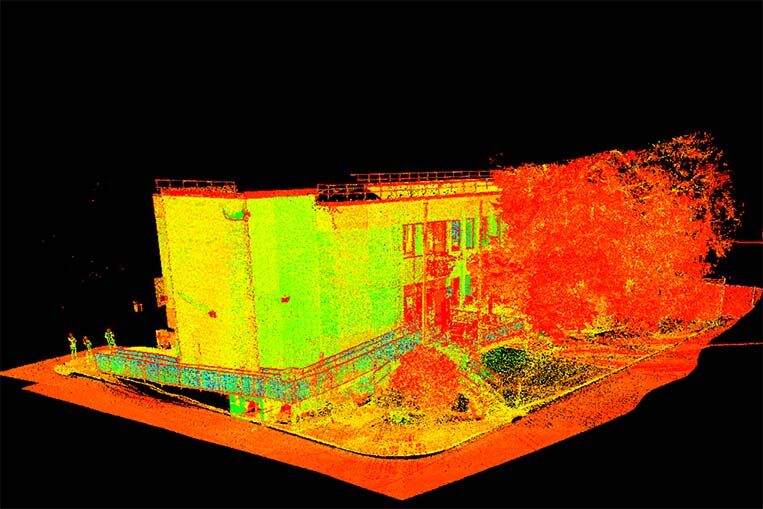The Essential Guide for Using 3D Scanning in Construction
Wiki Article
Exactly How 3D Laser Scanning Transforms Architectural Design and Building Projects
3D laser scanning is changing the landscape of building layout and building and construction. This modern technology offers unrivaled accuracy in recording existing environments, which facilitates far better task preparation and implementation. It lowers mistakes while enhancing effectiveness in various phases of growth. The effects for collaboration amongst architects, designers, and other stakeholders are substantial. These advancements unlock to new layout possibilities and cutting-edge remedies. What lies in advance for this evolving technology?The Basics of 3D Laser Scanning Modern Technology
Although 3D laser scanning technology might appear facility, its core principles are straightforward and transformative for architectural design. This technology employs laser beams to catch specific measurements of physical structures, generating a thorough factor cloud that stands for the scanned atmosphere. A laser scanner discharges quick pulses of light, gauging the moment it takes for the light to return, which permits the estimation of ranges with amazing accuracy.The resulting factor cloud can be transformed right into a 3D version, supplying designers with vital aesthetic data. This model makes it possible for specialists to adjust and examine design elements within their tasks, permitting cutting-edge solutions and enhanced visualization. By using 3D laser scanning, designers can much better understand the existing problems of a website, ensuring that brand-new designs balance with their surroundings. This assimilation of technology into architectural layout notes a substantial innovation, cultivating creativity and accuracy in the field.

Enhancing Accuracy and Efficiency in Architectural Projects
As building jobs significantly demand precision and speed, 3D laser scanning becomes a pivotal tool in boosting both accuracy and efficiency. This innovation catches countless information factors in a quick timeframe, creating precise and detailed 3D designs of existing structures. The capability to acquire accurate dimensions reduces the risk of errors during the layout stage, enabling engineers to envision their jobs with exceptional clearness.The rapid information collection process minimizes the time spent on-site, making it possible for teams to focus on evaluation and style improvements. With real-time information availability, adjustments can be made swiftly, advertising an extra structured workflow. The integration of 3D laser scanning right into building practices not just enhances measurement precision however likewise boosts the total job timeline, assisting in quicker decision-making. In an industry where precision is important, this innovation stands as a transformative pressure, raising the criteria of building style and construction jobs.
Improving Collaboration Amongst Stakeholders
While conventional architectural processes typically include fragmented communication amongst stakeholders, 3D laser scanning promotes a more natural collaborative setting. By providing specific, high-resolution information, this innovation allows designers, designers, professionals, and clients to run from a unified point of reference. The thorough visualizations generated via laser scanning eliminate obscurities and false impressions, ensuring that all parties have accessibility to the same info.This openness enhances decision-making and motivates prompt responses, as stakeholders can conveniently picture design aspects and spatial partnerships. On top of that, the assimilation of 3D scanning information into Building Info Modeling (BIM) platforms additionally streamlines collaboration, permitting real-time updates and adjustments. Such seamless communication not only minimizes problems yet also right here speeds up project timelines, as all stakeholders remain lined up throughout the design and building phases. Eventually, 3D laser scanning transforms conventional process right into a more collective and effective process, benefiting all events included.
Opening Imaginative Opportunities in Style
By allowing engineers to visualize complex spatial connections and complex information, 3D laser scanning discloses creative possibilities in layout. This technology permits for exact mapping of existing atmospheres, making it possible for designers to discover ingenious concepts that might have formerly appeared impractical. With very precise data, designers can explore unusual kinds and products, pushing the limits of conventional architecture.The assimilation of 3D laser scanning into the design procedure promotes collaboration amongst multidisciplinary groups, motivating the exchange of concepts and improving creativity. The detailed visualizations created by this modern technology not just aid in recognizing potential style obstacles yet likewise motivate services that might not have actually been considered. Therefore, engineers can create extra interesting and dynamic areas that resonate with individuals while fulfilling functional requirements. Ultimately, 3D laser scanning transforms the building landscape, empowering designers to realize their visions with unmatched precision and creative thinking.
The Future of 3D Laser Scanning in Architecture and Construction
The integration of 3D laser scanning into building layout not only improves imagination however additionally establishes the phase for its developing duty in the future of style and construction. As innovation advances, the precision and performance of laser scanning will certainly remain to enhance, enabling home builders and architects to produce extra complex designs with precision - 3D Scanning. Using this technology in real-time information collection will facilitate much better decision-making, reducing errors and simplifying processFuture applications might consist of augmented and virtual truth assimilations, allowing stakeholders to envision jobs in immersive atmospheres. On top of that, as sustainability ends up being a priority, 3D laser scanning will certainly anonymous support the growth of energy-efficient designs by giving thorough understandings right into existing structures. As partnership amongst different self-controls becomes even more crucial, the capability to share specific 3D models will certainly cultivate innovation and boost job results. Ultimately, 3D laser scanning will certainly redefine requirements in building style and building and construction techniques.
Regularly Asked Concerns
What Is the Cost of Carrying Out 3D Laser Scanning Modern Technology?

Exactly how Lengthy Does a Typical 3D Laser Scanning Project Take?
A typical 3D laser scanning task can take anywhere from a couple of hours to several days, depending upon elements such as the project's dimension, intricacy, and the degree of information needed for precise data capture.What Sorts Of Projects Benefit Most From 3D Laser Scanning?
3D laser scanning advantages numerous jobs, especially massive constructions, historic repairs, and complicated remodellings. It improves accuracy in dimensions, minimizes errors, and provides detailed information essential for reliable planning and implementation in architectural style and building.
Are There Specific Software Programs Required for 3D Laser Scans?
Yes, particular software program programs are important for refining 3D laser scans. 3D Scanning. Popular options consist of Autodesk Wrap-up, Faro Scene, and Leica Cyclone, each offering one-of-a-kind functions customized for analyzing and visualizing scanned data efficiently in different jobsHow Does 3D Laser Scanning Impact Environmental Sustainability in Construction?
3D laser scanning improves environmental sustainability in building and construction by minimizing material waste, making it possible for exact dimensions, and promoting reliable resource usage. This modern technology permits far better preparation, reducing the ecological impact of building and construction tasks via boosted accuracy and effectiveness.3D laser scanning is changing the landscape of architectural layout and construction. 3D laser scanning technology might appear complicated, its core principles are uncomplicated and transformative for architectural style. By allowing engineers to envision intricate elaborate information and spatial connections, 3D laser scanning exposes imaginative possibilities in design. The integration of 3D laser scanning into the layout procedure promotes cooperation amongst multidisciplinary groups, motivating the exchange of concepts and improving creativity. The integration of 3D laser scanning into building design not just enhances creative thinking yet also establishes the stage for its developing duty in the future of design and building.
Report this wiki page